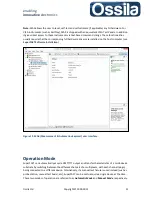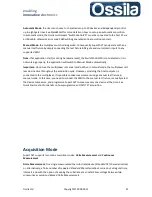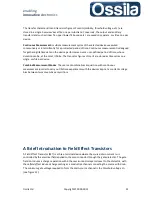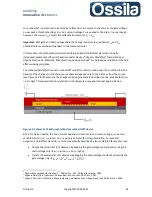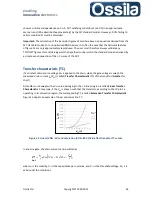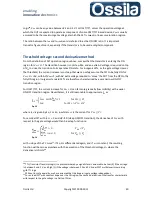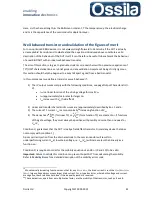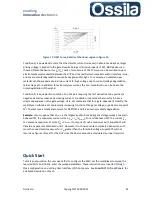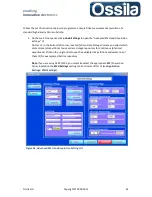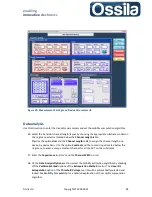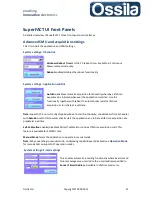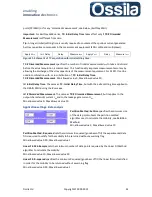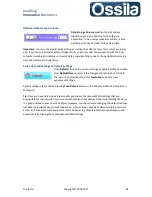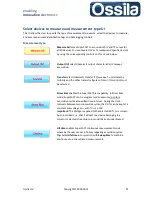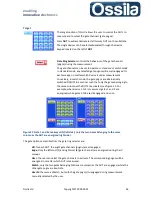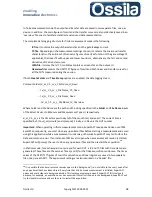
enabling
innovative
electronics
Ossila Ltd
Copyright © 2009-2015
43
Figure 17. OFET Curve, details of the linear region in figure 14.
Condition 3) is equivalent to state that the transfer current increases (in absolute value) as a larger
driving voltage is applied to the gate. Despite being an intrinsic property of FET, R&D devices can
show a different behaviour for
I
DS
(
V
GS
). Lack of monotonic of the TC curves can be ascribed to poor
electromechanical contacts (between the DUT and the test fixture), materials and/or interface issue,
and environmental degradation caused by oxygen and/or light. For example, an untested new
material can show a decrease in drain current for high voltage due to current/voltage degradation,
carrier traps etc. In addition, for extremely low current, the non-monotonic I
DS
can be due to the
noise degradation of the signal.
Condition 4) is equivalent to condition 3) in the part requiring the first derivative to be positive (a
negative derivative means a decreasing current). In addition, it demands the mobility to have a
simple
dependence on the gate voltage. Here, simple means that for a gate-dependent mobility, the
mobility can either be a monotonically increasing function of the gate voltage, or peak at some point
. The last case is relatively common for OFET/FET and it is known as mobility degradation.
Example:
Let us suppose that V
GS Max
is the largest (in absolute value) gate voltage swept. For a
well-
behaved
FET, the maximum current is then I
max
= I
DS
(V
GS Max
). For an ill-behaved FET, the current
I
DS
can present a maximum at some
<V
GS Max
. If only one of such a maximum exits, SuperFACT will
discard any experimental data
V
GS
>
. However, if I
DS
shows a more complicated behaviour, with
more than one (local) maximum for
V
GS
greater than the threshold voltage, SuperFACT will not
return any figures of merit for the DUT since the device cannot be considered a proper transistor.
Quick Start
To start an acquisition, the user needs first to configure the SMU, set the multiplexer to sweep the
required DUTs and, finally, enter the sweep parameters. These instructions are inputted through
three
configuration and setting
User Interface (UI) front panels. See
SuperFACT UI Front Panels
for
a detailed description of each.



